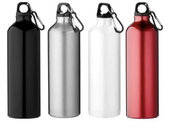PAB like Nautilus, is more useful when there are plenty of boat traffic or on liveaboard that is monitoring its guests’ whereabouts, the moment the guests are not accountable after resurfacing or the moment the AIS receiver showing MOB, activated by the guests who think they are lost at sea.
PLB alert response would be delayed due to the way the signal is being managed, as it first needs to acquire its GPS coordinates, before sending it to SAR satellites (LEOSAR & GEOSAR), then the SAR satellites rebroadcast the GPS coordinates to LUT (local user terminal). Then LUT forward the info, including your PLB serial number, to the appropriate MCC (Mission Control Center, for USA, it’ll be NOAA). MCC would match the PLB serial number with the data that you put in the registration, including your emergency contact number, then forward the info to RCC (Rescue Coordinating Center) . RCC then verify your where about by calling your emergency contact number to make sure it is not a false alarm, at the same time RCC coordinates with the local SAR agency, instructing them to begin the process of how to rescue you. The whole process may take sometime, like hours, much longer than the liveaboard would start searching for you, which is within minutes.




